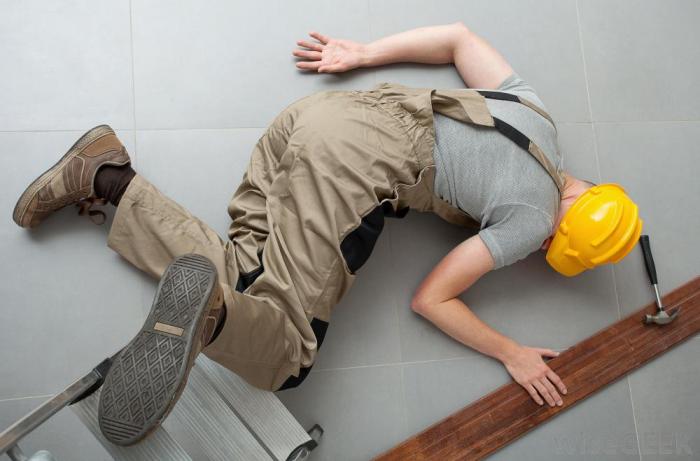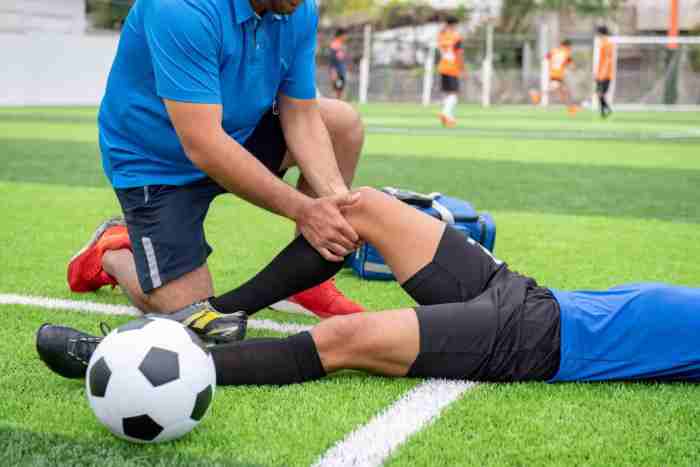Culinary crossword 2.2 accidents and injuries – Culinary Crossword 2.2: Accidents and Injuries in the Kitchen explores the prevalent types of accidents and injuries that occur within culinary settings, providing invaluable insights into preventive measures and the creation of a safe and healthy work environment. Embark on this culinary journey as we uncover the significance of kitchen safety protocols, first aid and emergency procedures, accident reporting and investigation, and the paramount importance of employee training and education in safeguarding the well-being of those who work in culinary environments.
As we delve deeper into this topic, we will uncover the consequences of neglecting kitchen safety protocols, unravel the steps involved in performing CPR, and emphasize the role of accident investigation in preventing future incidents. Moreover, we will provide practical tips on how to create an effective employee training and education program, ensuring that culinary professionals are equipped with the knowledge and skills to navigate the kitchen safely and efficiently.
Culinary Crossword 2.2 Accidents and Injuries
In the fast-paced environment of a culinary setting, accidents and injuries are unfortunately common. These incidents can range from minor cuts and burns to more serious injuries, and it is essential for culinary professionals to be aware of the potential hazards and take appropriate precautions to prevent them.
Common types of accidents and injuries in a culinary setting include:
- Cuts and lacerations from knives and other sharp objects
- Burns from hot surfaces, liquids, or steam
- Slips and falls due to wet or slippery floors
- Strains and sprains from lifting heavy objects or repetitive motions
- Eye injuries from exposure to chemicals or flying debris
To prevent these accidents and injuries, it is important to:
- Use sharp knives and other tools properly and keep them in good condition
- Handle hot objects with care and wear appropriate protective gear
- Keep floors clean and dry to prevent slips and falls
- Lift heavy objects safely and use proper lifting techniques
- Wear eye protection when working with chemicals or in areas where there is a risk of flying debris
By following these precautions, culinary professionals can create a safe and healthy work environment and reduce the risk of accidents and injuries.
Kitchen Safety Protocols

Kitchen safety protocols are essential for preventing accidents and injuries in a culinary setting. These protocols cover a wide range of topics, including:
- Proper use and maintenance of kitchen equipment
- Food safety and sanitation
- Fire safety
- Personal hygiene
- Emergency procedures
It is important for all culinary professionals to be familiar with and follow these protocols to ensure a safe and healthy work environment.
The consequences of not following kitchen safety protocols can be severe. Accidents and injuries can lead to lost time at work, medical expenses, and even permanent disability. In addition, unsafe practices can also lead to foodborne illnesses, which can have serious consequences for both customers and employees.
To ensure a safe and healthy work environment, it is essential to follow all kitchen safety protocols. These protocols are in place for a reason, and they should be followed at all times.
First Aid and Emergency Procedures

In the event of an accident or injury, it is important to be prepared to provide first aid and emergency care. All culinary professionals should be trained in basic first aid and CPR.
Basic first aid includes:
- Cleaning and dressing wounds
- Applying ice to reduce swelling
- Administering pain relievers
CPR (cardiopulmonary resuscitation) is a life-saving technique that can be used to restart the heart and breathing in the event of cardiac arrest. It is important to note that CPR should only be performed by trained individuals.
In the event of an emergency, it is important to remain calm and follow these steps:
- Call for help
- Assess the situation and provide first aid as needed
- Follow the instructions of emergency responders
By following these steps, you can help to ensure that the injured person receives the best possible care.
| Step | Action |
|---|---|
| 1 | Check for responsiveness |
| 2 | Call for help |
| 3 | Open the airway |
| 4 | Check for breathing |
| 5 | Begin chest compressions |
| 6 | Give rescue breaths |
| 7 | Continue CPR until help arrives |
Accident Reporting and Investigation
It is important to report all accidents and injuries to your supervisor or manager. This will help to ensure that the incident is properly documented and that appropriate action is taken to prevent similar incidents from occurring in the future.
When reporting an accident or injury, be sure to provide the following information:
- Date and time of the incident
- Location of the incident
- Description of the incident
- Names of any witnesses
Once an accident or injury has been reported, it is important to conduct an investigation to determine the cause of the incident and to identify any corrective actions that can be taken to prevent similar incidents from occurring in the future.
Accident investigations should be conducted by a qualified individual who is familiar with the kitchen environment and with accident investigation procedures.
Employee Training and Education
Employee training and education is essential for preventing accidents and injuries in a culinary setting. All culinary professionals should be trained on the following topics:
- Kitchen safety protocols
- First aid and emergency procedures
- Accident reporting and investigation procedures
Training should be conducted regularly and should be tailored to the specific needs of the employees.
In addition to formal training, it is important to provide employees with ongoing education on safety topics. This can be done through safety meetings, newsletters, or online resources.
By providing employees with comprehensive training and education, you can help to create a safe and healthy work environment for everyone.
FAQ Overview
What are the most common types of accidents in a culinary setting?
Cuts, burns, slips, falls, and strains are among the most prevalent types of accidents that occur in culinary environments.
How can I prevent accidents and injuries in the kitchen?
Adhering to kitchen safety protocols, wearing appropriate safety gear, maintaining a clean and organized workspace, and receiving proper training can significantly reduce the risk of accidents and injuries.
What are the essential kitchen safety protocols that should be followed?
Essential kitchen safety protocols include proper knife handling, safe food handling practices, maintaining a clean and organized workspace, and using equipment correctly.